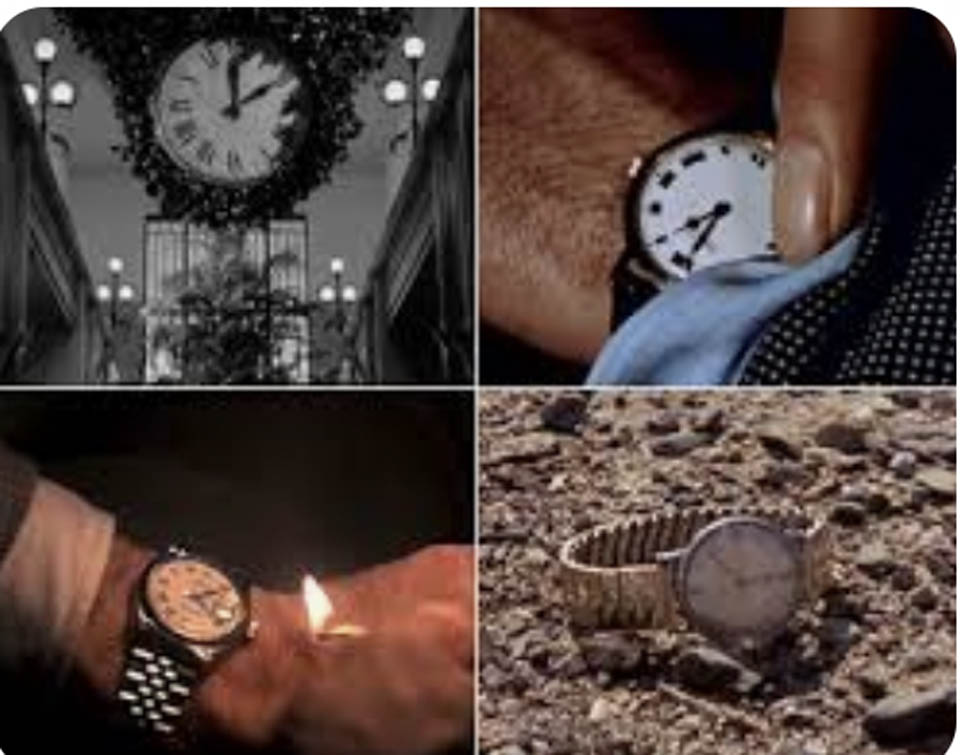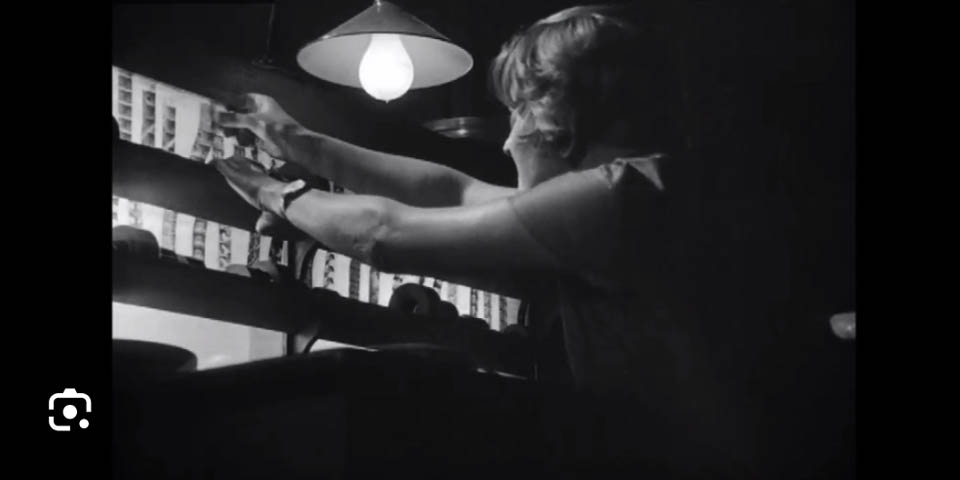I watched 40 minutes, from precisely 3:50-4:30, of Christian Marclay’s The Clock yesterday at MoMA, a heartfelt homage to a sunsetting but never fully settled technology—cinema. On this viewing, only days after an election which feels like it very well might lead to a sunsetting of the world as we know it, I deeply appreciated The Clock’s warm glows and thoroughly dated apparatuses: its darkened and hushed surroundings, quiet and contemplative fellow audience, and woeful diagetic soundings from analog devices: chimes, dings, windings. Over ten years old, the still grandiose and once cutting-edge artwork now felt retro and also healing; the digital barely gracing this homage to the mechanical. And such wonder to be felt at what humans could do and had done with their hands on machines! Making all these beautiful movies; creating and then saving so many gorgeous moments and faces; finding and then cutting together thousands of clips of clocks and watches without any assistance from AI!

This week’s viewing of The Clock was a much-needed reminder that technologies are not always cruel (or digital); that cinema is both a time storage and re-invigorating device of real help to humans. This viewing also inspired vague memories flashing up from when I first saw the film in Los Angeles, an art world smash: me, reclining; the bright lemon light of California sun as I exited the exhibit’s dark cinema bath; that I “didn’t like it.”
Why hadn’t I liked it? And then why was I revisiting it even so?
I was clear why I was seeing it again now. A recent review of its re-installation, ‘The Clock’ Revisits New York. Is It Still of Our Time? emphasizes Marclay’s and the work’s ideas and feelings about time, technology, and affect all very much currently on my mind (I have recently completed an experimental video, Please Hold, on these matters as they pertain to my other perennial commitments to AIDS and activism, more on this another time).
But why hadn’t I liked it then? … Hmm. No idea. Those details were now lost to me. Only the snappy conclusion remained. But then, I remembered something else. In another era, another version of my life in place and also technology, I had blogged about it! Blogging: so 20th century.
But it turns out, not exactly. A quick search allows me to learn that I penned “Christian Marclay’s ‘The Clock’: Time Compressor,” on July 9, 2011. A decade into this century and a mere thirteen years ago. Looking back now at that writing lying in wait, ready to awake from its slumber, held in amber in what I think of as this dead blog, I re-learn the date and place I saw it, and what I was interested in at that time. Too bad it was not a particularly good post, but I think that goes with the territory:
…as was true of my experience of 127 hours, this contemporary time-project [The Clock] also delivered, a meditation on time compression, cutting so frantically and gimmicky that one couldn’t catch a breath to think or ponder, or just be alive and aware in (movie) time. While that just may be the point—in our ADD, multi-tasking, world of cut-up screens we seek to ever fly away from boredom and contemplation—I got that point in just a few minutes. So why 24 hours?
On yesterday’s post-election 2024 viewing, the film’s 24 hour promise felt different—expansive, inviting, immersive (I only stayed 40 minutes because I had to get to another event… ha!) No matter that it was, indeed, cut as quickly as I had noted dismissively in 2011. For really, so is Man with A Movie Camera—one might argue that greatest piece of 24-hour, database cinema—cut at lightening speed and by hand by Dziga Vertov’s wife and editor, Yelizaveta Svilova, as mechanical labor, handicraft, and locomotion (this film and her work another preoccupation of this blog in its past). Only now, it seems, could I answer my own previous question, “why 24 hours?” given that ten years more of flight from “boredom and contemplation” (in the forms of Apple watches or teaming-streams of social media) had brought me to a newfound relish of most any room-bound self-reflexive review of technology.

2024’s experience of The Clock helped me remember, and revisit, the lost pleasure of the (my) blog, a digital time device more like cinema, I suppose, than many of today’s social media favorites: time-stamped, linearly back-flowing, searchable, my somewhat carefully expressed words and interests held from that time for today’s return: time storage and re-invigorating device. Over the years that I blogged actively (2007-2019, my final post was called “Some Troubles with Internet Time,” another preoccupation), I had a vague sense of my “audience” but not one marked or even known by today’s metrics and monetization. The activity of writing felt quick (like this is) but still with some actual weight and function, getting out a post to mark and share something I had seen, sure, but also to help me better understand what I think, not much like today’s immediate and utterly forgettable and forgotten images and tweets (say a photo of program with a proscenium behind it, or of a “memorable” meal). My writing here has always been on the cusp of professional (in that I blogged about my scholarly and artistic interests), but not polished nor ever actually published. Digital labor, handicraft, and locomotion at another frequency and duration: the blog as work, over years of self-produced and deepening context, authored and anchored most usefully, it seems now, for myself; the blog as time.
